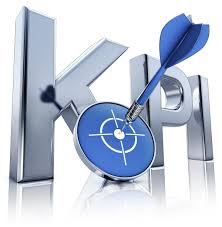
“Intelligence is the ability to adapt to change.” – Stephen Hawking
Whether you’re a small or large business, there are certain critical performance metrics that enable managers and executives to effectively manage and achieve results. In order to navigate the complex waters of government contracting, keeping your fingers on the pulse of your business is essential. Utilizing an enterprise resource planning (ERP) system allows your business to capture vast amounts of data. However, the challenge lies in focusing on the KPIs that truly matter.
Today, we hone in on 7 important KPIs for government contractors. Tracking the right Key Performance Indicators will make you more proactive, aid in selecting the right projects, enable more accurate bid calculations, and ultimately lead to better profit margins.
- Backlog: Determine remaining funds on existing contracts precisely, along with how many option years remain. Knowing precisely when the critical percentage of funds has been reached on each contract is essential.
- Wrap Rate: Wrap rates comprise the costs included in the final price charged to the government for your services or products. Government contracting is highly competitive, especially in today’s Lowest Price Technically Acceptable (LPTA) environment. It’s crucial to accurately assess what you can and can’t do and at what price.
- Labor Utilization: Tracking the percentage of time your employees spend on direct (billable) work versus indirect (non-billable) work in real-time and monitoring trends enables more effective adjustments to meet target billable utilization.
- Accounts Receivable Aging: While tracking aged accounts receivables won’t necessarily expedite payment, it may provide insight into your customers (agencies) and allow you to prepare for certain trends.
- Profit and Loss by Project: Understanding not only that certain projects are performing adequately but also the reasons behind their over/underperformance on a real-time basis allows you to make on-the-fly adjustments and maximize profits.
- Budget vs. Actuals by Project: Each project manager should be able to clearly track budgets versus actuals on the projects they oversee and capture work progress assessments against the baseline plan. Providing valid, timely, and auditable information enables proactive project management analysis and action.
- New Business Pipeline: While it’s easy to track the business you already have, what about potential future sales? An integrated Customer Relationship Management (CRM) system can help you view both existing and future business data on one screen. Additionally, you can assess the number of pending opportunities, the probability of winning business, the cost of preparing proposals, success rates on specific types of contracts or with specific agencies, and potentially uncover new areas for growth.
With the right ERP system, you can harness the power of data and gain invaluable insights into your government contracting business. JAMIS Prime ERP offers a comprehensive solution, allowing you to access all these critical KPIs in one central source of truth. It doesn’t just provide information; it empowers you to make informed decisions swiftly and effectively. For a transformative leap in managing your government contracts and maximizing profitability, reach out to us at info@jamis.com, or request a demo of the system HERE.
